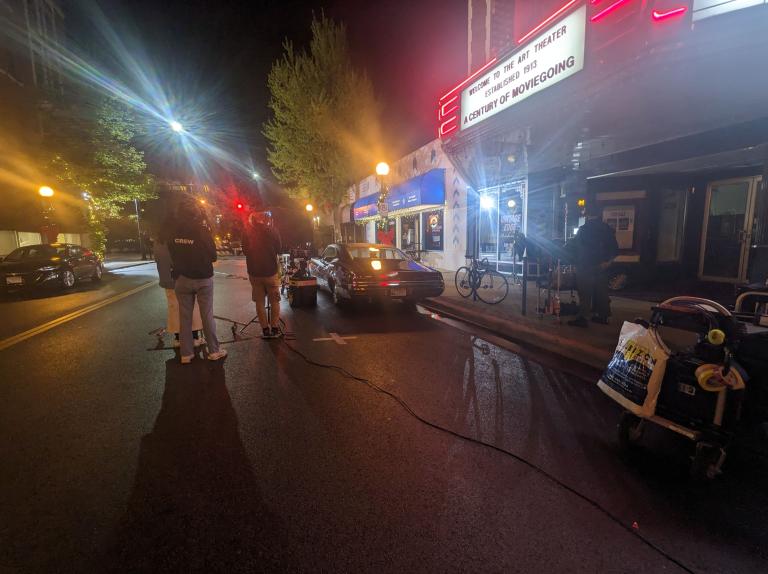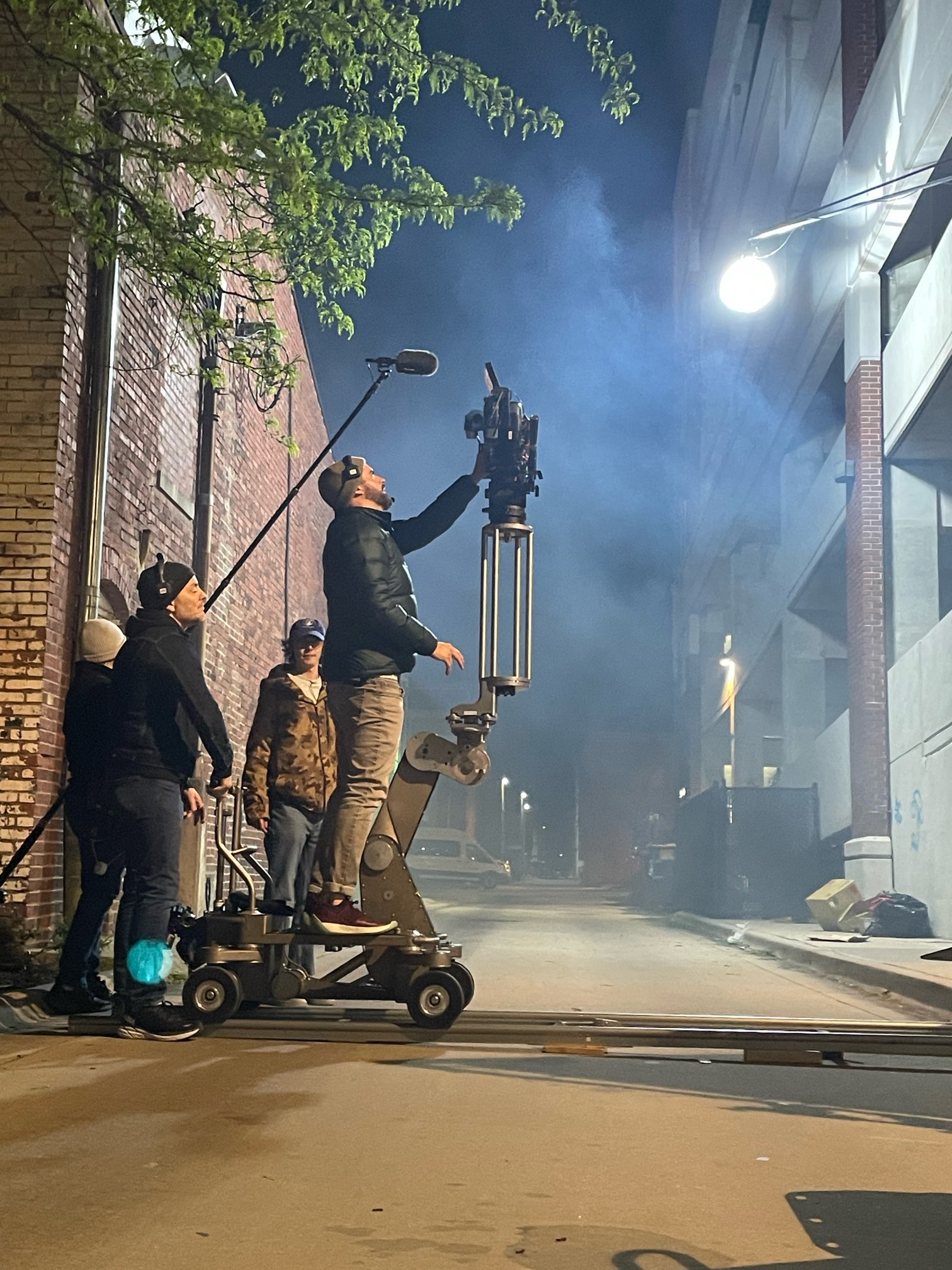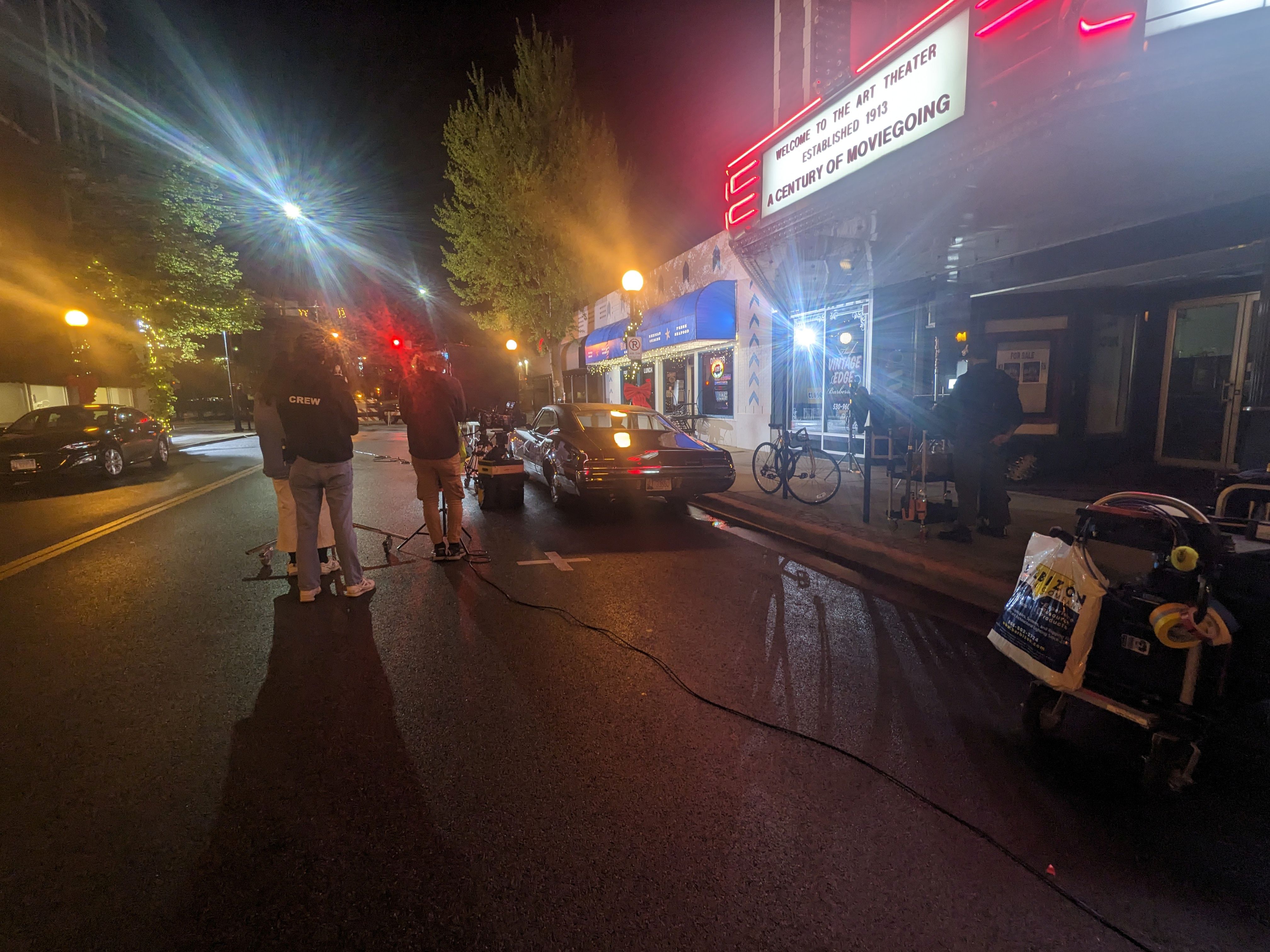
Experience Champaign-Urbana turned its film-friendly aspirations into a high-impact community initiative. By activating local talent, artists, and locations, the destination organization is redefining its brand while capturing the attention of filmmakers from Chicago to Hollywood.
Destination Profile
Champaign & Urbana are midsize twin cities in Central Illinois and home to the University of Illinois. In addition to college athletic and cultural events, Champaign-Urbana offers a thriving art scene, a robust culinary scene and a micro-urban vibe.
Geographical Location
Champaign-Urbana, IL is located in Central Illinois, south of Chicago, west of Indianapolis, and east of St. Louis.
Destination Population Size
212,000
Organization Budget Size
$1.5M+
Destination Challenge
Champaign County offers filmmakers a robust array of attractive locations, but most productions filmed in the county were small, local, independent productions. As a CVB, we desired to increase film production in our service area by attracting filmmakers from larger cities with our film-friendly amenities. The State of Illinois currently offers a generous 30% tax incentive for filmmakers. Still, most productions in the state take place in the City of Chicago, despite the overall high cost of filming in a big city. To amplify our area as a filmmaking destination, we needed to work with local filmmakers to develop an action plan that would help get our name into the national filmmaking scene.
The Project
Experience Champaign-Urbana worked with three local film studios to develop an action plan for increasing film productions in our area. Our plan included the following objectives, with completed actionable items indicated following the objective:
1. Develop a database of film-friendly locations and vendors in the county
We advertised and hosted a public meeting for anyone interested in featuring their property in film. Local filmmakers informed attendees of the requirements and intricacies of being a film location, including a role play of how filmmakers typically interact within a location. We also contacted local businesses and owners of outdoor spaces to garner interest and obtain consent to feature their properties on our database. These efforts resulted in more than 50 local properties registering as film-friendly locations for our database, including public locations on our website and private homes on our internal database. We also held two additional public meetings. Initially, our target audience was local vendors, such as caterers, hotels, cleaning companies, and contractors. Second, our target audience was local artists willing to contract their artwork to productions for use in the background of film scenes, as all artwork in films must be authorized by the artist. These efforts resulted in a wide array of vendors and artists being submitted to our internal database that filmmakers can draw upon when they have a specific need.
2. Develop indoor spaces that can be used exclusively for filming
One local film studio worked with us to develop support for a grant application to build sound stages in Rantoul, IL, on the former Chanute Air Force Base. They were awarded the grant, and construction is ongoing, with several areas of the sound stages complete and in use for film productions. Click here for more info on this press release.
3. Increase the pool of local acting talent and trained film crew
We partnered with a local casting company to host a public meeting for those interested in being part of a film cast (background or frontline actors). The event was sold out within a week, with 80 registered attendees and an extensive waitlist. In addition to several open casting calls, this meeting resulted in about 700 locals submitting their information for use in an internal casting database that filmmakers can access with specific talent needs. Our local studios also partnered with Parkland Community College to offer film crew training opportunities (grip & electric, etc.), resulting in several dozen residents trained as crew members for future productions.
4. Increase awareness and support of filmmaking in our area
We hosted a familiarization tour for Chicago filmmakers interested in bringing full or partial productions to our county. This consisted of a review of our filming look book and a bus tour of prominent locations that work well for film productions. The permitting process was also reviewed, as our office handles film permitting for the county. In addition to the tour, we provide ongoing support for filmmakers by researching and connecting them to local resources such as film locations, hotels, and caterers so they can focus on the production without the hassle of finding necessary resources on their own.
As an overall initiative to increase our outreach, all of our public meetings were hosted in free, easily accessible locations along public transit routes to ensure access for anyone with the desire to participate. Some of these locations included a public library and a park district recreation center. We intend to continue these efforts moving forward.
Please note that all publicly available information regarding the above items, including the location database and lookbook, can be found at experiencecu.org/film-office.

Results and Key Performance Indicators (KPIs)
Objective 1
Over 50 locations, 31 vendors, and 25 artists have agreed to be part of our available database for filmmakers.
Objective 2
The grant was awarded, and sound stage construction is underway.
Objective 3
About 700 residents have submitted their information to be a part of the casting database. Several dozen people are also now trained film crew members.
Objective 4
9 small to mid-size productions have been filmed here over the past year. There is a major production with A-list talent coming in June 2025.
Actionable Advice
Listen to what filmmakers need and make your best attempt at finding good local matches for these needs. From our perspective, film productions are easy to work with and willing to accommodate locally available amenities. However, they won't know about these amenities unless someone makes the connection.
Also, keep an open mind when it comes to film locations. Filmmakers often love older, more run-down locations that they can modify for scenes. I once recruited an older local salon for a scene. The salon owner was worried and said she needed to put in a new floor, paint, and spruce the place up before the production could occur. When I suggested this to the filmmaker, he indicated that he initially liked that location because of its existing conditions, so renovations would actually take away from the character of the scene!
Top Takeaways
1.
Listen to filmmakers and try to accommodate their needs.
2.
Gather local support in the form of film locations, vendors, artists, and other areas specifically requested by productions interested in your area.
3.
Create an organized support system that productions can draw upon - easily accessible databases of the needed resources are key to making productions run smoothly.
Lessons Learned
Community support is the absolute key to making film productions successful in a community. A film production cannot be successful without local assistance, from hotels and caterers to properties owners and casted talent. It is critical to share honest information about filmmaking with those interested in being involved. For example, filmmaking often takes place during late-night hours - is a local homeowner or business manager willing to stay up really late to accommodate? Are caterers able to commit to a very specific time for crew meals, given the union labor rules in this area? These are just some of the questions worth considering when garnering community support.
Jen Shelby, co-owner of locally owned partner Flyover Film Studios, shares, “We are excited to work with Film Champaign-Urbana to expand the understanding of what it means to bring production work to the area and explain how businesses will feel the positive impact. Whether we are working on a short film, a documentary, a music video, or a feature-length film, it truly takes a village to make it all happen.”
Now that we have several productions under our belt, we intend to repeat some of our public information sessions to gain even more local support. One change we'd like to implement is having past filmmakers speak and answer questions at these meetings to give their perspective of filming here. We'd also like to develop a more comprehensive plan to market our county to filmmakers using these perspectives (perhaps a video of past filmmakers discussing their experiences here).

What’s Next?
Filmmakers interested in partnering with us can visit our website at experiencecu.org/film-office for more details on what we offer and how to proceed. We’re happy to put them in touch with our local film studios, vendors, and any other entity they may need to ensure the success of their production. We can also schedule tours of film locations if requested.
Other DMOs interested in integrating filmmaking into their strategic plans should consider whether the necessary amenities are in place in their region. If not, begin a public outreach campaign to gather the needed locations, vendors, artists, and other necessary components that will help filmmakers be successful. In many cases, people are very willing participants once they receive information about how the industry works. Once these amenities are in place, implement a marketing campaign to attract filmmakers to your area. This can include anything from a robust website to targeted social media outreach and familiarization tours for location scouts.
Champaign-Urbana, Illinois
Champaign-Urbana, IL is located in Central Illinois, south of Chicago, west of Indianapolis, and east of St. Louis.



